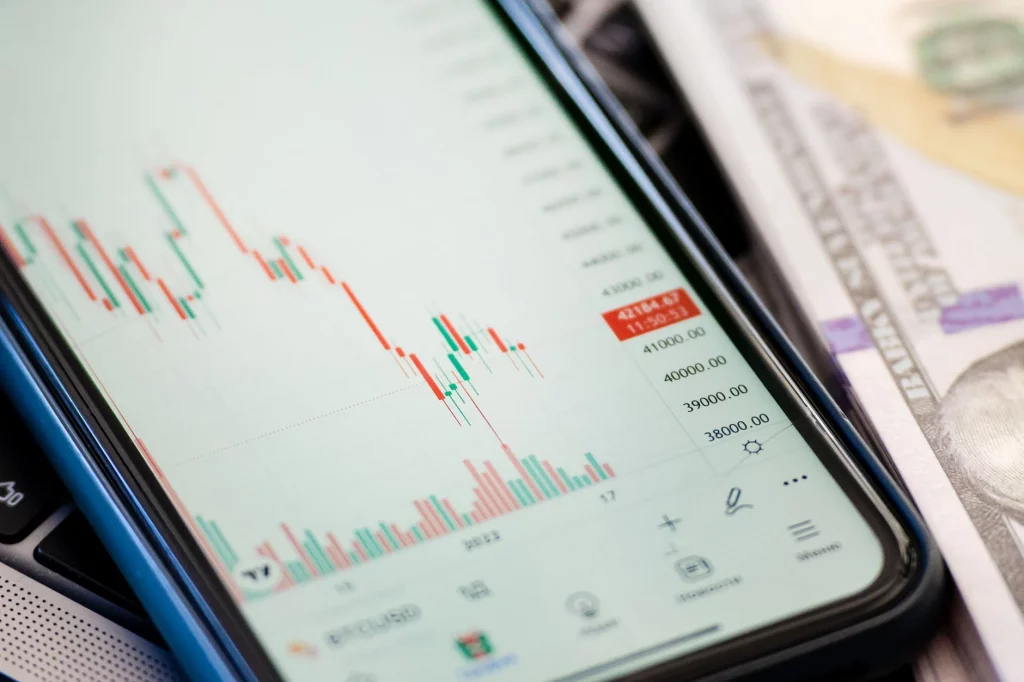Negative Balance Protection
Brokers with negative balance protection ensure that you can’t lose more than your initial deposit. Regulators typically make it compulsory for forex and CFD platforms to offer this safety measure to retail traders. This article explains what negative balance protection is and how to compare the best brokers in 2025.
Top Brokers With Negative Balance Protection for United States































Negative Balance Protection Explained
Negative balance protection is a safeguarding measure that means that traders cannot build up losses greater than the funds deposited in their accounts. It is used when trading with leveraged products like CFDs and essentially provides an additional layer of security.
Today, most regulated brokers offer negative balance protection to retail traders. However, professional investors may be able to waive this right and trade without it. This allows them to take on larger position sizes in return for increased risk.

Example
To demonstrate how negative balance protection works, let’s look at an example:
- You deposit $200 into your brokerage account and invest half into an oil CFD with leverage of 1:10. This means that your position is worth $1,000 ($100 deposit x 10 leverage)
- Following a spike in market volatility, the price of oil drops by 30%
- Your losses now equate to $300 ($1,000 x 30%) and so you are $100 in the red
- If you took the position out at a broker without negative balance protection, you would owe $100 in addition to the $200 deposit. However, brokers with negative balance protection would instead automatically close your position once the price of oil dropped by 20%, equal to your $200 initial deposit
History
The precedent of protecting against a negative balance came from the Swiss Franc/Euro crisis in 2015. Following the Eurozone crisis in 2011, the Swiss National Bank fixed trading between CHF and EUR at a specified exchange rate. When this fixed rate was removed in 2015, the value of CHF suddenly increased which led to huge losses for some traders holding short positions. Because the event was so unexpected, many brokers chose to forgive large portions of the debt owed by retail traders.
Benefits
The key advantage is that it helps prevent traders from incurring significant losses and racking up debts. It is particularly useful during periods of high market volatility where wild price swings can push you into the red. Ultimately, it helps traders manage risk by essentially introducing a stop loss that reduces the potential downside.
How to Compare Brokers
Take the following factors into account when choosing between brokers:
Regulation
Make sure that the broker is regulated by a recognized authority such as the CySEC, FCA or ASIC. This information should be visible on the provider’s website. If you are unsure, you can search for a license on the regulator’s online registry. Importantly, unregulated brokers may not offer negative balance protection.
Costs
Another consideration is the cost of trading. You should compare any associated fees and payment models, for example, monthly subscriptions or one-time account opening fees. Also, take into account that free accounts typically have higher forex spreads or larger commissions.
Trading Experience
A key part of a user’s trading experience is the platform available. A popular option is the MetaQuotes Suite with MetaTrader 4 and MetaTrader 5. These are some of the world’s most intuitive and advanced retail trading platforms.
A useful tip is to look for a broker that offers a free demo account so you can practise strategies before investing real cash. 
Customer Support
The best brokers with negative balance protection have reliable customer support teams. Choose a provider that offers access through a variety of channels, such as live chat, phone hotline or social media messaging. 24/5 support also means you can get help with account queries during key trading windows.
Reviews
There is no replacement for insights from other traders. You can find advice and recommendations from like-minded traders on social media sites like Reddit, Discord, Facebook and Telegram. Alliteratively, check out our detailed reviews of the top brands here.
Safety & Security
While negative balance protection is important, it is not the only safety measure in place at the best brokers. Two-factor authentication, segregated trading accounts and investor compensation schemes all offer extra security.
Regulators
The top financial regulators each take a slightly different approach to negative balance protection and how it’s implemented. Importantly, check the rules and requirements of the agency that oversees your broker of choice.
Australian Securities & Investments Commission
All retail brokers licensed by the Australian Securities and Investments Commission (ASIC) must implement negative balance protection. The rules state that a retail trader’s funds must sum to at least 50% of the required margin across all CFD positions. If funds fall below this amount, CFD positions are automatically closed until the account’s balance exceeds the 50% threshold.
The ASIC has also introduced restrictions on the maximum leverage allowed, which varies between instruments. The maximum leverage that brokers can offer on major forex pairs, for example, is 1:30.
Europe
Most regulators in Europe have adopted the rules written by the European Securities and Markets Authority (ESMA). As a result, the Cyprus Securities and Exchanges Commission (CySEC) and the UK Financial Conduct Authority (FCA) both state that licensed brokers must offer negative balance protection. This involves a margin-close out policy on a per-account basis. Brokers must close CFD positions if account funds drop below the 50% required margin. Importantly, account balances consist of all investments and unrealized profits, not just the capital deposited.
Additionally, brokers must adhere to similar leverage restrictions imposed by the ASIC.
Bottom Line
Brokers with negative balance protection should be at the top of your list when searching for a provider. It is a safeguard that can help prevent large losses and debt accruing. It is also a good measure of how reliable and trustworthy a broker is. Importantly, we recommend checking a brand that is regulated by the likes of the CySEC, ASIC or FCA.
FAQ
Does Negative Balance Protection Stop All Losses?
You can still experience losses when trading with a broker that offers negative balance protection. The safety measure simply stops you from owing more capital than you hold in your trading account.
Is There An ECN Broker With Negative Balance Protection?
Yes, several brokers offer ECN accounts with negative balance protection. One popular example is Pepperstone, which is regulated by the ASIC and the FCA.
How Does Negative Balance Affect My Trades?
The safety measure should not limit how much profit you can earn from a trade. The only way that you will be impacted is if you have insufficient funds in your account to cover at least 50% of the required margin on your CFD position, for example. If this happens, at least one of your CFD positions will be closed. If there is a situation where your account balance is negative, then the broker will pay the debt on your behalf.
Is Negative Balance Protection Offered By All Brokers?
No, there are still some brokers without negative balance protection. They are usually licensed with an offshore regulator that does not mandate its use. If you do choose to trade with such a provider, ensure you have an appropriate plan in place to mitigate any risks.
What Factors Should I Consider When Comparing Brokers?
First and foremost, look at a company’s regulatory status. Further factors such as trading platforms, market access and customer support should also be taken into account. Fortunately, our website already has many reviews of different brokers to help you find the right provider.
